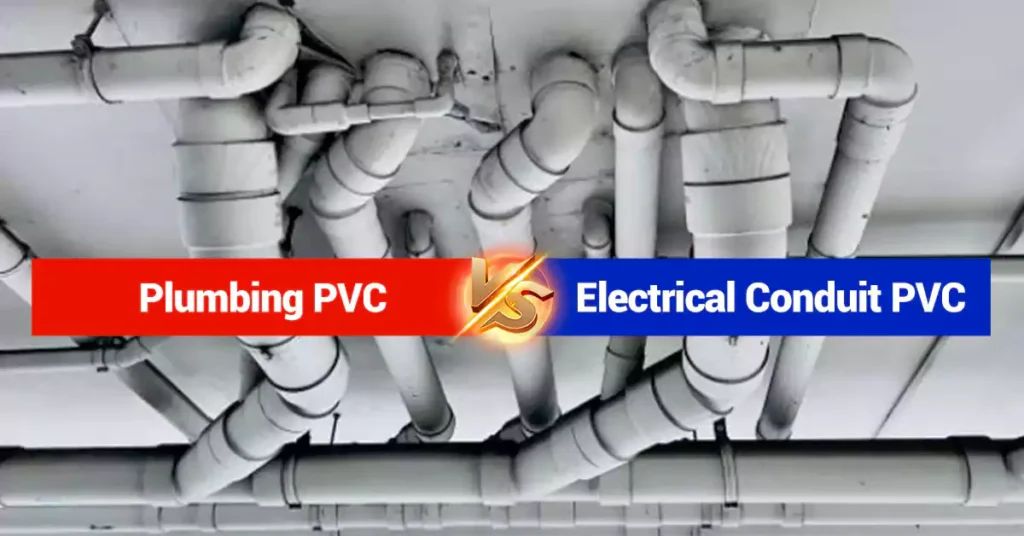
Tabla de contenido
En el mundo de la construcción y la infraestructura, las tuberías de PVC (cloruro de polivinilo) desempeñan un papel fundamental. Se utilizan ampliamente para diversas aplicaciones debido a su durabilidad, asequibilidad y versatilidad. Sin embargo, dentro del ámbito de las tuberías de PVC, existen dos tipos distintos que a menudo causan confusión entre los usuarios: el PVC para plomería y el PVC para conductos eléctricos. Si bien pueden parecer similares a primera vista, y muchas personas asumen erróneamente que estos dos tipos de tuberías de PVC son intercambiables, pero esta idea errónea puede tener consecuencias significativas. Es fundamental reconocer que el PVC para plomería y el PVC para conductos eléctricos están diseñados para aplicaciones completamente diferentes y poseen características distintivas que los hacen adecuados para fines específicos. En este artículo, brindaremos una comprensión integral del PVC para plomería y el PVC para conductos eléctricos, arrojando luz sobre sus diferencias y asegurando que los usuarios puedan tomar decisiones informadas al seleccionar el tipo apropiado para sus necesidades específicas.
¿Qué es la tubería de PVC para plomería?
El PVC para plomería, también conocido como PVC-U (cloruro de polivinilo no plastificado), es un tipo de tubería de PVC diseñada específicamente para su uso en sistemas de plomería. A diferencia del PVC flexible que se utiliza en otras aplicaciones, el PVC para plomería es rígido y duradero, capaz de soportar altas presiones de agua y variaciones de temperatura que se encuentran comúnmente en los sistemas de plomería.
Las tuberías de PVC para plomería están hechas de una combinación de resina de PVC, estabilizadores y otros aditivos para mejorar su resistencia y durabilidad. La ausencia de plastificantes en el PVC para plomería le otorga una naturaleza rígida y no flexible, lo que lo hace ideal para aplicaciones de plomería.
¿Para qué se utilizan las tuberías de PVC en plomería?
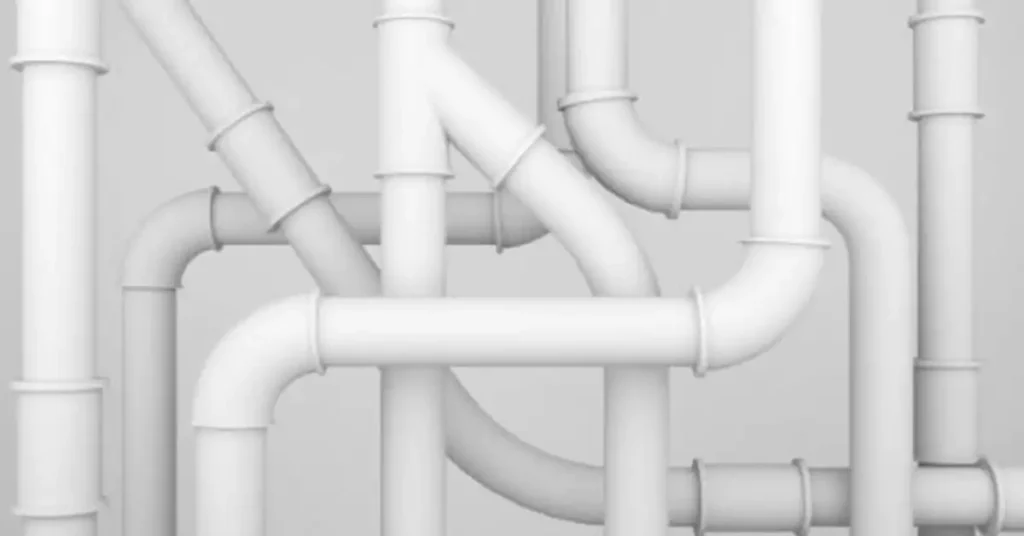
- Suministro de agua potable: Las tuberías de PVC se utilizan ampliamente para transportar agua potable en edificios residenciales, comerciales e industriales. Son adecuadas tanto para líneas de suministro de agua fría como caliente. Las tuberías de PVC son resistentes a la corrosión, las incrustaciones y las reacciones químicas, lo que las convierte en una opción confiable para suministrar agua potable limpia y segura.
- Sistemas de drenaje y residuos: Las tuberías de PVC se utilizan ampliamente en sistemas de drenaje y eliminación de desechos en edificios. Transportan de manera eficiente las aguas residuales y cloacales desde los accesorios, como lavabos, inodoros, duchas y lavadoras, hasta el alcantarillado principal o el sistema séptico. Las tuberías de PVC tienen interiores lisos que facilitan el flujo de desechos y evitan obstrucciones.
- Sistemas de ventilación: Las tuberías de PVC se utilizan habitualmente en sistemas de ventilación de fontanería. Las tuberías de ventilación se utilizan para eliminar los gases y olores de las cloacas del sistema de fontanería, lo que garantiza una circulación de aire adecuada y evita los olores desagradables en el edificio. Las tuberías de PVC son ligeras, fáciles de instalar y resistentes a la corrosión, lo que las hace adecuadas para aplicaciones de ventilación.
- Sistemas de riego: Las tuberías de PVC se utilizan ampliamente en sistemas de riego para fines agrícolas, residenciales y comerciales. Se utilizan para distribuir agua a campos, jardines y áreas de jardinería. Las tuberías de PVC tienen una excelente resistencia a los productos químicos y a los rayos UV, lo que las hace adecuadas para aplicaciones al aire libre donde la exposición a la luz solar y a los productos químicos del suelo es común.
- Aplicaciones de plomería industrial: Las tuberías de PVC se utilizan en diversas aplicaciones de plomería industrial, como plantas de procesamiento químico, fábricas e instalaciones de fabricación. Se utilizan para transportar fluidos, ácidos, álcalis y otros productos químicos en procesos industriales. Las tuberías de PVC ofrecen resistencia química y pueden soportar una variedad de temperaturas, lo que las hace adecuadas para diversas necesidades de plomería industrial.
¿Cuál es la característica de la tubería de PVC para plomería?
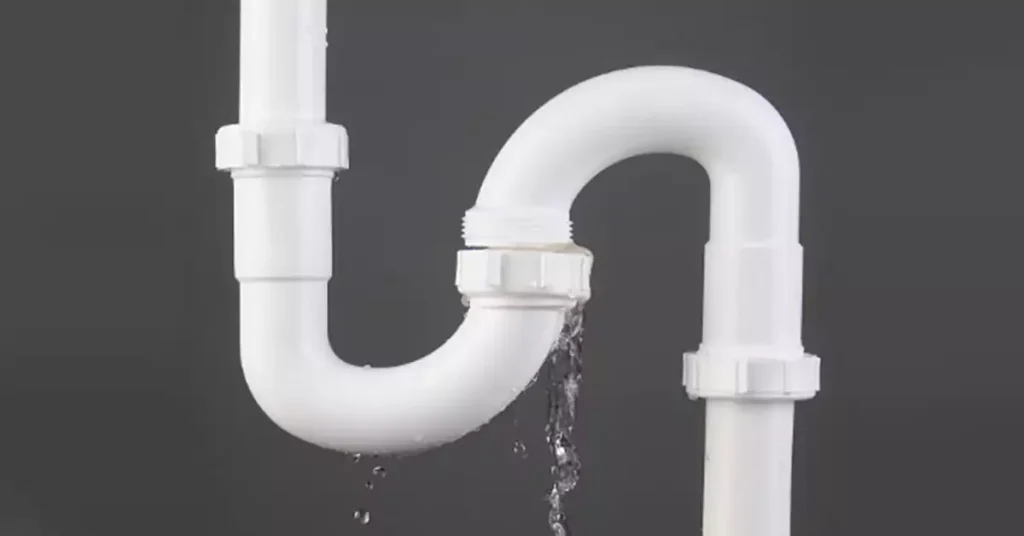
Las tuberías de PVC para plomería poseen varias características y especificaciones clave que las hacen adecuadas para aplicaciones de plomería:
- Material: Las tuberías de PVC para plomería están hechas de cloruro de polivinilo (PVC), un material termoplástico conocido por su resistencia, durabilidad y resistencia química. Las tuberías de PVC que se utilizan en aplicaciones de plomería suelen ser rígidas y se las conoce como tuberías “de cédula”. Los tipos más comunes de tuberías de PVC para plomería incluyen las de cédula 40 y cédula 80.
- Tamaño y diámetro: Las tuberías de PVC para plomería vienen en una variedad de tamaños y diámetros para adaptarse a diferentes necesidades de plomería. Los tamaños están estandarizados y generalmente se designan por su tamaño nominal de tubería (NPS) o diámetro nominal (ND). Los tamaños comunes para tuberías de PVC para plomería varían de ½ pulgada a 12 pulgadas de diámetro, con tamaños más grandes disponibles para aplicaciones específicas.
- Clasificación de presión: Las tuberías de PVC que se utilizan en aplicaciones de plomería tienen clasificaciones de presión específicas que indican su capacidad para soportar la presión interna. La clasificación de presión generalmente se expresa en libras por pulgada cuadrada (psi) y está determinada por el espesor de las paredes de la tubería. Las clasificaciones de presión comunes para las tuberías de PVC para plomería incluyen 125 psi, 160 psi y 200 psi para las tuberías Schedule 40, mientras que las tuberías Schedule 80 tienen clasificaciones de presión más altas.
- Resistencia a la corrosión: Las tuberías de PVC son muy resistentes a la corrosión, lo que las convierte en una excelente opción para los sistemas de plomería que transportan agua y otros fluidos. A diferencia de las tuberías de metal, las tuberías de PVC no se oxidan ni se corroen cuando se exponen a la humedad o a ciertos productos químicos, lo que garantiza una durabilidad a largo plazo y evita la contaminación de los fluidos transportados.
- Interior liso: Las tuberías de PVC para plomería tienen superficies interiores lisas que facilitan un flujo eficiente y evitan obstrucciones. Las superficies lisas minimizan la fricción y la turbulencia, lo que permite que el agua y otros fluidos fluyan sin problemas a través de las tuberías. Esta característica ayuda a evitar obstrucciones y a mantener el rendimiento general del sistema de plomería.
- Resistencia química: Las tuberías de PVC presentan una excelente resistencia a una amplia gama de sustancias químicas que se encuentran comúnmente en los sistemas de plomería. No se ven afectadas por la mayoría de los ácidos, álcalis, sales y otras sustancias químicas presentes en el agua o las aguas residuales. Esta resistencia química garantiza la longevidad de las tuberías y minimiza el riesgo de degradación o falla debido a la exposición a sustancias químicas.
- Facilidad de instalación: Las tuberías de PVC son livianas, lo que las hace fáciles de manipular e instalar. Se pueden cortar, unir y conectar mediante diversos métodos, como cemento solvente, accesorios roscados o acoplamientos mecánicos. Las tuberías de PVC suelen tener extremos estandarizados tipo casquillo o campana que permiten conexiones convenientes sin necesidad de herramientas especiales ni técnicas complejas.
Pros y contras de las tuberías de PVC para plomería
Ventajas de la plomería de PVC:
Durabilidad: Las tuberías de PVC para plomería son muy duraderas y resistentes al óxido, la corrosión y la degradación química, lo que garantiza una larga vida útil.
Asequibilidad: Las tuberías de PVC para plomería son rentables en comparación con otros materiales para tuberías de plomería, lo que las convierte en una opción popular para proyectos de plomería residencial y comercial.
Ligero: Las tuberías de PVC para plomería son livianas, lo que las hace fáciles de manipular e instalar, reduciendo los costos de mano de obra e instalación.
Desventajas de la plomería de PVC:
Rango de temperatura limitado: Si bien las tuberías de PVC para plomería pueden soportar una amplia gama de temperaturas, tienen limitaciones de temperatura en comparación con otros materiales de tuberías, como el cobre o PEX.
Vulnerabilidad a la radiación UV: Las tuberías de PVC para plomería son susceptibles a la degradación cuando se exponen a la luz solar prolongada o a la radiación ultravioleta. Por lo tanto, deben protegerse adecuadamente o enterrarse bajo tierra en aplicaciones al aire libre.
Consejos para la instalación de tuberías de PVC
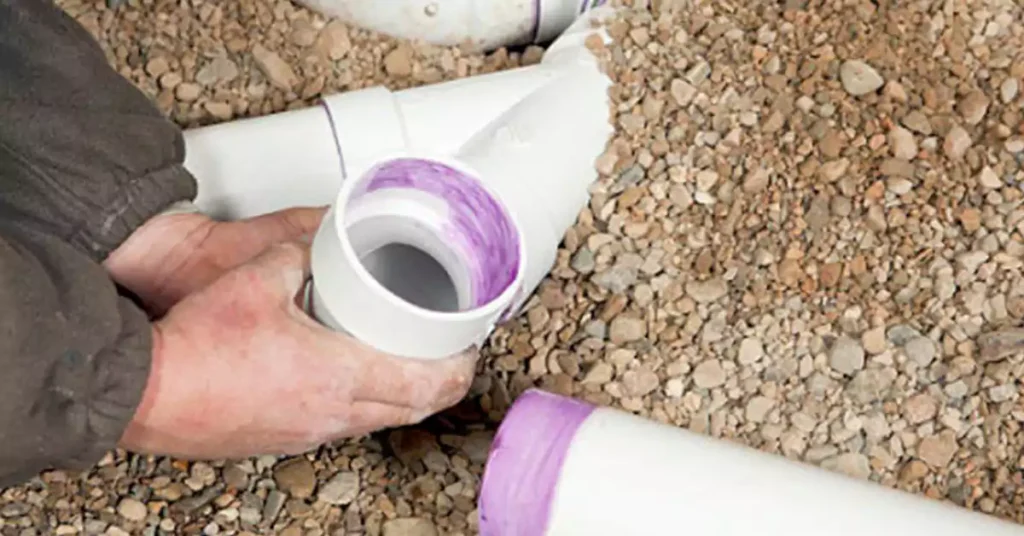
Las técnicas de instalación adecuadas son fundamentales para el rendimiento eficaz de las tuberías de PVC para plomería. Algunas consideraciones clave incluyen:
Corte y unión: Las tuberías de PVC para fontanería se pueden cortar fácilmente a la longitud deseada utilizando un cortatubos de PVC o una sierra para metales. Normalmente se unen utilizando cemento solvente, que crea una conexión resistente y a prueba de fugas.
Soporte y alineación: Durante la instalación, es fundamental contar con un soporte y una alineación adecuados para garantizar que las tuberías estén seguras y alineadas correctamente. Se deben utilizar soportes adecuados, como soportes o soportes para tuberías, para evitar que se comben o se desalineen.
Expansión y contracción: Las tuberías de PVC para plomería tienen un cierto grado de expansión y contracción térmica. Se deben tener en cuenta estos movimientos para evitar tensiones en las tuberías y posibles fugas.
Cumplimiento de códigos y normas de plomería de PVC
Las tuberías de PVC para plomería deben cumplir con códigos y normas de construcción específicos para garantizar la seguridad y el cumplimiento. Estos códigos pueden variar según la región o jurisdicción, pero generalmente cubren aspectos como el tamaño de las tuberías, los métodos de instalación y los estándares de los materiales.
Algunas normas comunes incluyen:
ASTM D1785: Esta es la especificación estándar para tuberías de plástico de PVC, cédulas 40, 80 y 120. Cubre los requisitos dimensionales, de rendimiento y de material para tuberías de PVC utilizadas en aplicaciones de presión, incluido el suministro y distribución de agua.
NSF/ANSI 14: Esta norma establece los requisitos para las tuberías y accesorios de plástico utilizados en los sistemas de agua potable. Abarca las tuberías y accesorios de PVC que cumplen con los requisitos específicos de salud y rendimiento para su uso en sistemas de distribución de agua.
NSF/ANSI 61: Esta norma establece los requisitos para la lixiviación química y los efectos sobre la salud de los materiales utilizados en los componentes de los sistemas de agua potable, incluidas las tuberías de PVC. Garantiza que las tuberías de PVC cumplan con los estándares necesarios para la calidad y la seguridad del agua.
Norma B181.2: Esta norma, titulada “Tuberías y accesorios termoplásticos para desagües, desechos y ventilación”, establece los requisitos para las tuberías y accesorios termoplásticos utilizados en los sistemas de desagüe, desechos y ventilación (DWV) en Canadá. Abarca las tuberías y accesorios de PVC, así como otros materiales termoplásticos, y establece especificaciones para dimensiones, materiales, rendimiento y métodos de prueba.
Norma B137.3 de la CSA: Esta norma, titulada “Tuberías rígidas de cloruro de polivinilo (PVC) para aplicaciones a presión”, especifica los requisitos para las tuberías rígidas de PVC utilizadas en aplicaciones a presión en Canadá. Abarca las tuberías de PVC para distribución de agua, sistemas de irrigación y otras aplicaciones a presión, e incluye disposiciones sobre dimensiones, materiales, rendimiento, pruebas y marcado.
Código Internacional de Plomería (IPC): El IPC es un código modelo adoptado por muchos estados y municipios de los EE. UU. Especifica los requisitos mínimos para los sistemas de plomería, incluido el uso de materiales aprobados, como tuberías de PVC, para diversas aplicaciones de plomería.
¿Qué es el conducto eléctrico de PVC?
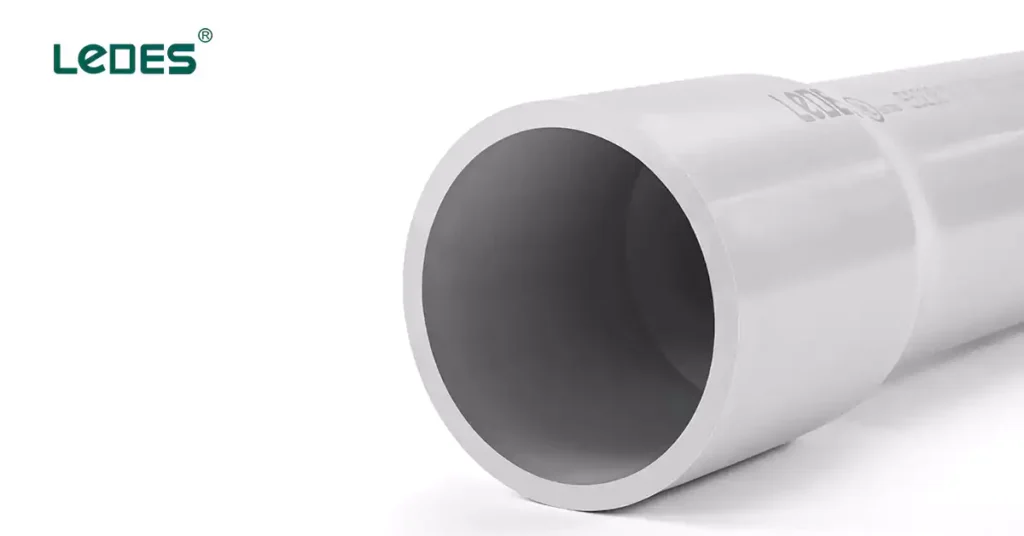
PVC Electrical Conduit, es un tipo de tubería de PVC diseñada específicamente para instalaciones eléctricas. Sirve como carcasa protectora para el cableado eléctrico, protegiéndolo de daños físicos, humedad y otros factores ambientales. Los conductos eléctricos de PVC no son conductores, lo que significa que no conducen electricidad, lo que garantiza la seguridad del sistema eléctrico.
¿Cuál es la aplicación del conducto eléctrico de PVC?
Los conductos eléctricos de PVC se utilizan ampliamente en diversas aplicaciones eléctricas; algunas aplicaciones comunes incluyen:
Cableado residencial: Los conductos eléctricos de PVC se utilizan habitualmente en edificios residenciales para proteger y enrutar el cableado eléctrico. Se utilizan tanto en instalaciones expuestas como ocultas, como para pasar cables a través de paredes, techos y pisos.
Edificios comerciales e industriales: Los conductos de PVC se utilizan ampliamente en entornos comerciales e industriales. Se emplean para el cableado en oficinas, locales comerciales, fábricas, almacenes y otras estructuras donde se requieren sistemas eléctricos.
Instalaciones al aire libre: El conducto de PVC es adecuado para aplicaciones al aire libre donde el cableado eléctrico necesita protección contra la humedad, la luz solar y otros factores ambientales. Se utiliza comúnmente para tender líneas eléctricas hacia iluminación exterior, bombas, unidades de aire acondicionado y otros equipos al aire libre.
Cableado subterráneo: Los conductos de PVC se utilizan a menudo en instalaciones eléctricas subterráneas para proteger el cableado de la tierra, la humedad y los daños externos. Se entierran directamente en el suelo y se pueden encontrar en aplicaciones como entradas de servicios eléctricos subterráneos, alimentadores subterráneos residenciales y sistemas de iluminación exterior.
Cableado de datos y comunicaciones: El conducto de PVC se utiliza para enrutar cables de datos y comunicación, como cables Ethernet, telefónicos y coaxiales. Proporciona protección y organización para estos cables, lo que garantiza una transmisión de datos eficiente y confiable.
Energía solar: Con la creciente popularidad de las instalaciones de energía solar, los conductos de PVC se utilizan con frecuencia para alojar y proteger el cableado eléctrico en los sistemas de paneles solares. Ayudan a enrutar el cableado desde los paneles hasta los inversores y otros componentes.
¿Cuáles son las características de los conductos eléctricos de PVC?
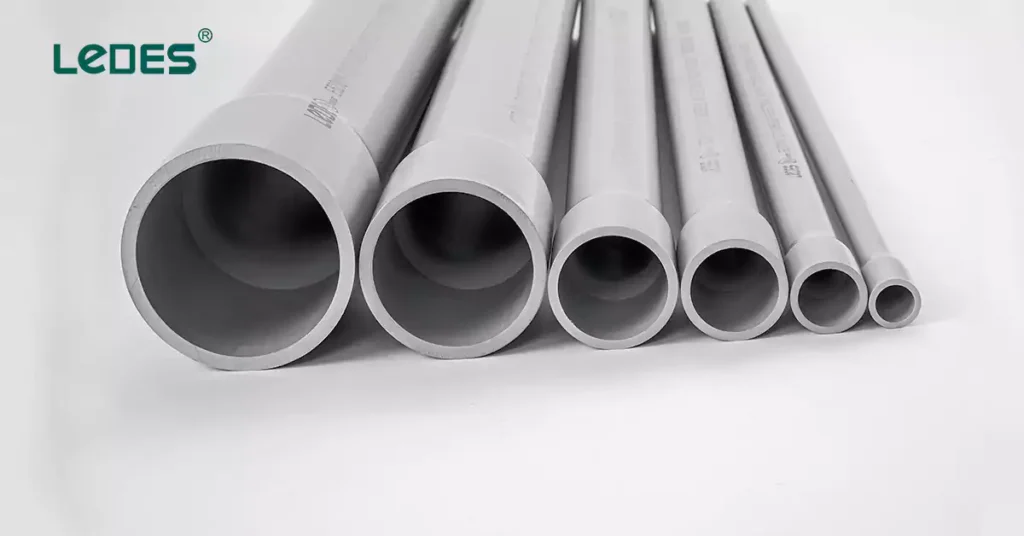
Los conductos eléctricos de PVC ofrecen varias características clave que los convierten en la opción preferida para proteger y enrutar el cableado eléctrico en diversas aplicaciones. Estas son algunas de las características clave de los conductos eléctricos de PVC:
Durable y resistente a los impactos: Los conductos de PVC son conocidos por su durabilidad y capacidad para soportar impactos. Proporcionan una excelente protección para el cableado eléctrico contra daños físicos, como golpes, raspones o abrasiones accidentales.
Resistente a la corrosión: El PVC es inherentemente resistente a la corrosión, lo que lo hace adecuado tanto para instalaciones interiores como exteriores. Puede soportar la humedad, los productos químicos y otros elementos corrosivos, lo que garantiza un rendimiento y una fiabilidad a largo plazo.
No conductor: El PVC es un material no conductor, lo que significa que no conduce la electricidad. Esta propiedad hace que los conductos de PVC sean una excelente opción para enrutar de forma segura el cableado eléctrico, lo que reduce el riesgo de descargas eléctricas o cortocircuitos.
Resistente a los rayos UV: Los conductos de PVC se pueden fabricar con propiedades resistentes a los rayos UV, lo que les permite soportar una exposición prolongada a la luz solar sin degradarse ni volverse quebradizos. Esta característica los hace adecuados para aplicaciones en exteriores donde se requiere protección contra la radiación UV.
Resistente al fuego: Hay disponibles variantes de conductos eléctricos de PVC resistentes al fuego que brindan protección adicional contra incendios en aplicaciones donde se deben cumplir códigos o regulaciones contra incendios.
Ligero y fácil de instalar: Los conductos de PVC son livianos en comparación con otros materiales, lo que facilita su manipulación e instalación. Su ligereza reduce el tiempo y el esfuerzo de instalación, lo que los convierte en la opción preferida tanto para profesionales como para aficionados al bricolaje.
Económico: Los conductos de PVC suelen ser más asequibles que otros materiales, como los conductos metálicos. Su relación coste-beneficio los convierte en una opción atractiva para diversas instalaciones eléctricas, lo que ayuda a mantener bajos los costos del proyecto.
Consejos para la instalación de conductos de PVC
Las técnicas de instalación adecuadas son fundamentales para el rendimiento eficaz de los conductos eléctricos de PVC. Algunas consideraciones clave incluyen:
Planificación y diseño: Antes de la instalación, se debe realizar una planificación y un diseño cuidadosos para determinar la mejor ruta para el conducto eléctrico de PVC. Tenga en cuenta factores como la accesibilidad, la expansión futura y los requisitos eléctricos específicos del proyecto.
Flexión adecuada: Cuando sea necesario, los conductos eléctricos de PVC se pueden doblar con calor o con herramientas especiales para doblar conductos de PVC. Es importante seguir las instrucciones del fabricante y mantener el radio de curvatura mínimo para evitar dañar el conducto.
Fijación segura: Los conductos eléctricos de PVC deben sujetarse de forma segura mediante correas, abrazaderas o colgadores adecuados a intervalos regulares para evitar que se comben y garantizar la estabilidad.
Cumplimiento de códigos y normativas sobre conductos eléctricos de PVC
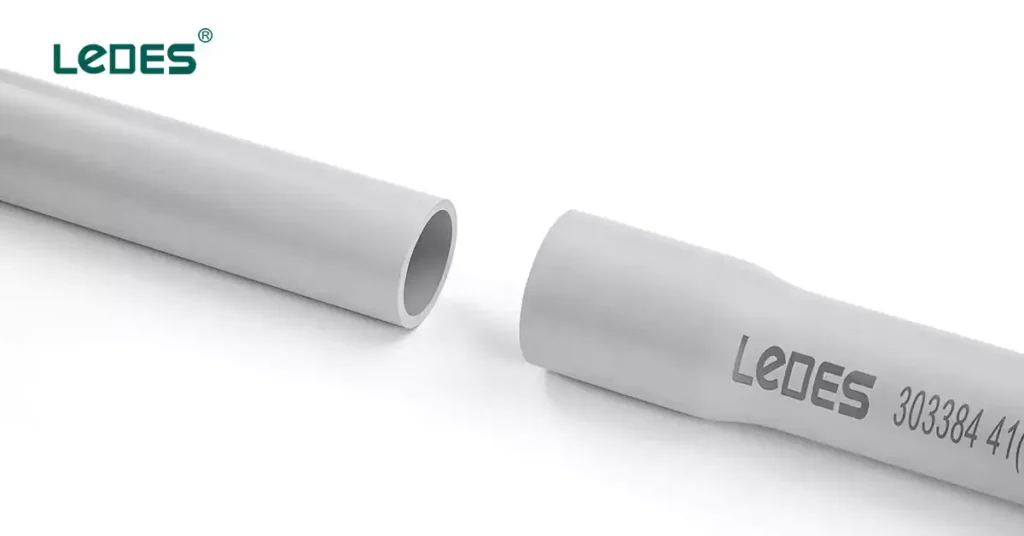
Las instalaciones de conductos eléctricos de PVC deben cumplir con códigos y normas eléctricas específicos para garantizar la seguridad y el cumplimiento. Algunas normas comunes que se siguen son:
ASTM D1784: Esta norma ASTM especifica los requisitos para la resina de PVC utilizada en la fabricación de conductos eléctricos de PVC. Garantiza que el material de PVC utilizado en la producción de conductos cumple con estándares específicos de calidad y rendimiento.
UL651: UL651 es una norma desarrollada por Underwriters Laboratories (UL) que cubre los conductos y accesorios de PVC para instalaciones eléctricas. Proporciona requisitos para las propiedades físicas, el rendimiento y las pruebas de los conductos de PVC para garantizar su idoneidad para su uso en diversas aplicaciones eléctricas.
Norma CSA C22.2 N.º 211.2: Esta norma de la CSA (Asociación Canadiense de Normas) se refiere a los conductos, accesorios y conexiones de PVC rígido que se utilizan en instalaciones eléctricas en Canadá. Establece requisitos para las dimensiones, los materiales, el rendimiento y las pruebas de los conductos de PVC para garantizar su seguridad y el cumplimiento de las normas eléctricas canadienses.
NEMA TC-2: La norma TC-2 de la Asociación Nacional de Fabricantes Eléctricos (NEMA) cubre los conductos de PVC utilizados para aplicaciones eléctricas en los Estados Unidos. Establece requisitos para las dimensiones, el rendimiento y las pruebas de los conductos de PVC para garantizar su idoneidad para las instalaciones eléctricas.
NEC (Código Eléctrico Nacional): El NEC es un código eléctrico ampliamente adoptado en los Estados Unidos, que proporciona pautas para instalaciones eléctricas seguras. Incluye requisitos para instalaciones de conductos, incluidos los conductos de PVC, relacionados con el tamaño, el tendido, la conexión a tierra y otras consideraciones de seguridad. El cumplimiento del NEC es esencial para garantizar instalaciones de conductos de PVC seguras y que cumplan con el código.
Diferencia entre el PVC para plomería y el PVC para conductos eléctricos
Cuando se trata de tuberías de PVC, es importante tener en cuenta las distintas características y propósitos del PVC para plomería y el PVC para conductos eléctricos. Si bien pueden parecer similares, cumplen funciones diferentes y tienen características específicas que los hacen adecuados para sus respectivas aplicaciones.
Tamaños y dimensiones:
Las tuberías de PVC para plomería están disponibles en una amplia gama de tamaños, que normalmente van desde ½ pulgada a 24 pulgadas de diámetro, también hay otros tamaños disponibles. Estos tamaños corresponden a los requisitos de plomería estándar para líneas de suministro de agua, líneas de drenaje y sistemas de ventilación. Las tuberías de PVC para conductos eléctricos, por otro lado, generalmente tienen un diámetro más pequeño, que normalmente va desde ½ pulgada a 6 pulgadas. El tamaño de las tuberías de PVC para conductos eléctricos está determinado por la cantidad y el tamaño de los cables eléctricos que están destinados a encerrar.
● Espesor de la pared:
Las tuberías de PVC para plomería suelen tener una pared más gruesa en comparación con las tuberías de PVC para conductos eléctricos. El mayor espesor de pared de las tuberías de PVC para plomería es necesario para soportar las altas presiones de agua que se encuentran comúnmente en los sistemas de plomería. Por otro lado, las tuberías de PVC para conductos eléctricos tienen una pared más delgada, ya que su propósito principal es proteger el cableado eléctrico en lugar de soportar la presión.
A continuación se muestran algunas comparaciones de dimensiones de tuberías de PVC Schedule 40 y 80 y conductos de PVC rígido Schedule 40 y 80 (parte de los tamaños):
| Artículo/tubería | Tubo de PVC Sch. 40 (pulgadas) | Conducto eléctrico de PVC de calibre 40 (pulgadas) | ||||
| Tallas | sobredosis | Identificación de la avenida | Min. Muro | Avenida OD | Identificación de la avenida Min. | Min. Muro |
| 1/2” | 0.840 | 0.602 | 0.109 | 0.840 | 0.578 | 0.109 |
| 3/4” | 1.050 | 0.804 | 0.113 | 1.050 | 0.780 | 0.113 |
| 1” | 1.315 | 1.029 | 0.133 | 1.315 | 1.004 | 0.133 |
| 1-1/4” | 1.660 | 1.360 | 0.140 | 1.660 | 1.335 | 0.140 |
| 1-1/2” | 1.900 | 1.590 | 0.145 | 1.900 | 1.564 | 0.145 |
| 2” | 2.375 | 2.047 | 0.154 | 2.375 | 2.021 | 0.154 |
| 2-1/2” | 2.875 | 2.445 | 0.203 | 2.875 | 2.414 | 0.203 |
| 3” | 3.500 | 3.042 | 0.216 | 3.500 | 3.008 | 0.216 |
| 3-1/2” | 4.000 | 3.521 | 0.226 | 4.000 | 3.486 | 0.226 |
| 4” | 4.500 | 3.998 | 0.237 | 4.500 | 3.961 | 0.237 |
| 5” | 5.563 | 5.016 | 0.258 | 5.563 | 4.975 | 0.258 |
| 6” | 6.625 | 6.031 | 0.280 | 6.625 | 5.986 | 0.280 |
| 8” | 8.625 | 7.942 | 0.322 | — | — | — |
| 10” | 10.750 | 9.976 | 0.365 | — | — | — |
| 12” | 12.750 | 11.889 | 0.406 | — | — | — |
Artículo/tubería | Tubo de PVC Sch. 80 (pulgadas) | Conducto eléctrico de PVC de calibre 80 (pulgadas) | ||||
Tallas | sobredosis | Identificación de la avenida | Min. Muro | Avenida OD | Identificación de la avenida Min. | Min. Muro |
1/2” | 0.840 | 0.526 | 0.147 | 0.840 | 0.502 | 0.147 |
3/4” | 1.050 | 0.722 | 0.154 | 1.050 | 0.698 | 0.154 |
1” | 1.315 | 0.936 | 0.179 | 1.315 | 0.910 | 0.179 |
1-1/4” | 1.660 | 1.255 | 0.191 | 1.660 | 1.227 | 0.191 |
1-1/2” | 1.900 | 1.476 | 0.200 | 1.900 | 1.446 | 0.200 |
2” | 2.375 | 1.913 | 0.218 | 2.375 | 1.881 | 0.218 |
2-1/2” | 2.875 | 2.290 | 0.276 | 2.875 | 2.250 | 0.276 |
3” | 3.500 | 2.864 | 0.300 | 3.500 | 2.820 | 0.300 |
3-1/2” | 4.000 | 3.326 | 0.318 | 4.000 | 3.280 | 0.318 |
4” | 4.500 | 3.786 | 0.337 | 4.500 | 3.737 | 0.337 |
5” | 5.563 | 4.768 | 0.375 | 5.563 | 4.713 | 0.375 |
6” | 6.625 | 5.709 | 0.432 | 6.625 | 5.646 | 0.432 |
8” | 8.625 | 7.565 | 0.500 | — | — | — |
10” | 10.750 | 9.493 | 0.593 | — | — | — |
12” | 12.750 | 11.294 | 0.687 | — | — | — |
Clasificación de presión:
Las tuberías de PVC para plomería están diseñadas con clasificaciones de presión específicas, como Schedule 40 o Schedule 80, que indican su capacidad para soportar diferentes presiones de agua. Estas clasificaciones de presión son esenciales para garantizar la integridad y la seguridad del sistema de plomería. Por el contrario, las tuberías de PVC para conductos eléctricos no tienen clasificación de presión, ya que no están diseñadas para contener fluidos bajo presión.
A continuación se muestran los requisitos de presión para dos de las tuberías de PVC de plomería más utilizadas, las tuberías de PVC Schedule 40 y Schedule 80:
Clasificación de presión (psi) | ||
Tamaño normal | Tubo de PVC Schedule 40 | Tubo de PVC Schedule 80 |
1/2” | 600 | 850 |
3/4” | 480 | 690 |
1” | 450 | 630 |
1-1/4” | 370 | 520 |
1-1/2” | 330 | 470 |
2” | 280 | 400 |
2-1/2” | 300 | 420 |
3” | 260 | 370 |
3-1/2” | 240 | 350 |
4” | 220 | 320 |
5” | 190 | 290 |
6” | 180 | 280 |
8” | 160 | 250 |
10” | 140 | 230 |
12” | 130 | 230 |
Impermeable:
Las tuberías de PVC para plomería están diseñadas para ser impermeables, ya que su función principal es transportar agua. Están construidas para evitar fugas y mantener el flujo de agua dentro del sistema de plomería. Por otro lado, las tuberías de PVC para conductos eléctricos no requieren el mismo nivel de impermeabilización, ya que su propósito principal es proteger el cableado eléctrico de daños físicos y factores ambientales.
Color:
Una diferencia obvia entre las tuberías de PVC para plomería y los conductos eléctricos de PVC son sus colores. Las tuberías de PVC para plomería suelen ser de color blanco, pero las tuberías de PVC Schedule 80 suelen ser de color gris oscuro. Por otro lado, los conductos eléctricos de PVC suelen ser de color gris claro, no de color gris oscuro como los de PVC Schedule 80. Los fabricantes pueden agregar diferentes productos químicos para crear diferentes colores de tuberías y conductos.
Guarniciones:
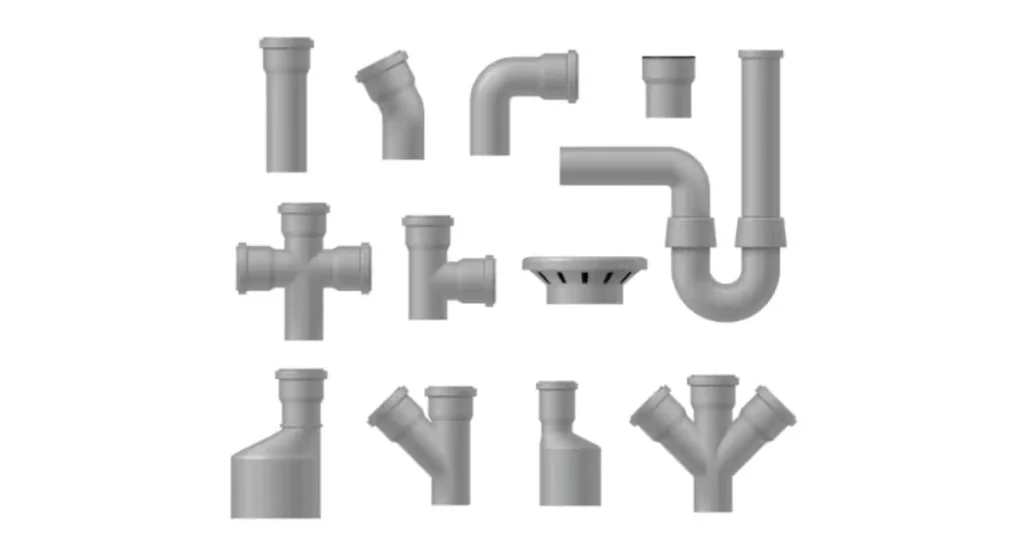
Las tuberías de PVC para plomería y los conductos eléctricos utilizan diferentes tipos de accesorios. Los accesorios de PVC para plomería están diseñados para conexiones herméticas e incluyen opciones como acoplamientos, codos, tes y válvulas. Los accesorios de PVC para conductos eléctricos, por otro lado, están diseñados específicamente para instalaciones eléctricas e incluyen conectores, acoplamientos, cuerpos de conductos y cajas que permiten el enrutamiento y la conexión adecuados de los cables eléctricos.
Aplicaciones:
Las tuberías de PVC para plomería están diseñadas para usarse en sistemas de plomería, como líneas de suministro de agua, líneas de drenaje y sistemas de ventilación en edificios residenciales, comerciales e industriales. Son compatibles con varios accesorios y electrodomésticos de plomería. Las tuberías de PVC para conductos eléctricos, por otro lado, se utilizan para proteger el cableado eléctrico en aplicaciones como sistemas eléctricos residenciales, edificios comerciales e instalaciones al aire libre. Son compatibles con cables, alambres y cajas eléctricas.
¿Se puede utilizar PVC de fontanería para conductos eléctricos?
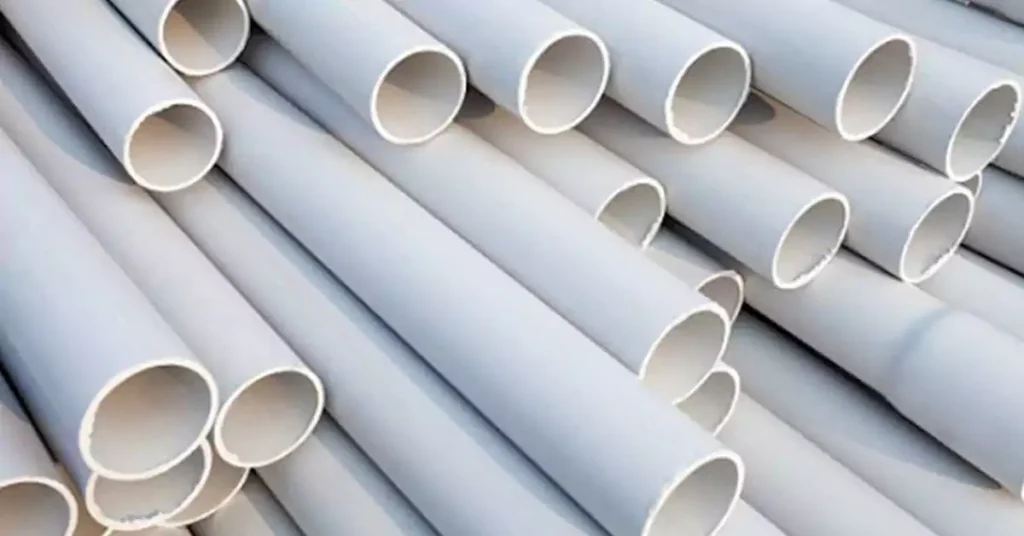
El mal uso de las tuberías de plomería de PVC o de los conductos eléctricos de PVC puede acarrear diversas consecuencias, es fundamental comprender los riesgos potenciales asociados al uso inadecuado de este tipo de tuberías de PVC para evitar resultados costosos y peligrosos.
Problemas de presión del agua:
Una de las consecuencias más importantes del mal uso de las tuberías de PVC para plomería o de los conductos eléctricos de PVC son los problemas de presión del agua. Las tuberías de PVC para plomería están diseñadas específicamente para soportar las altas presiones de agua que se encuentran comúnmente en los sistemas de plomería. Tienen paredes más gruesas y clasificaciones de presión más altas para garantizar la integridad y la funcionalidad del sistema. Si se utilizan tuberías de PVC para conductos eléctricos, que tienen paredes más delgadas y carecen de clasificaciones de presión, en aplicaciones de plomería, pueden fallar bajo la presión de agua sostenida. Esto puede provocar la rotura de tuberías, fugas y daños por agua en las áreas circundantes.
Fugas y daños por agua:
El uso incorrecto de tuberías de PVC para plomería o conductos eléctricos de PVC puede provocar fugas y daños por agua. Las tuberías de PVC para plomería están diseñadas para ser impermeables, lo que garantiza la contención y el flujo adecuados de agua dentro del sistema de plomería. Por el contrario, las tuberías de PVC para conductos eléctricos no están diseñadas con el mismo nivel de impermeabilización. El uso de tuberías de PVC para conductos eléctricos en aplicaciones de plomería puede provocar fugas debido a la falta de sellos y conexiones adecuados. La exposición prolongada a fugas de agua puede provocar daños estructurales, crecimiento de moho y reparaciones costosas.
Peligros de seguridad:
El uso de tuberías de PVC para plomería en lugar de tuberías de PVC para conductos eléctricos o viceversa puede generar riesgos de seguridad importantes. Las tuberías de PVC para plomería no están diseñadas para soportar corrientes eléctricas y pueden representar un riesgo de descarga eléctrica o incendio cuando se utilizan para cableado eléctrico. De manera similar, las tuberías de PVC para conductos eléctricos no están diseñadas para soportar las altas presiones de agua que se encuentran típicamente en los sistemas de plomería. El uso de tuberías de PVC para conductos eléctricos para aplicaciones de plomería puede provocar la rotura de tuberías, fugas de agua y daños a la propiedad.
Aumento de los costes de mantenimiento y reparación:
El uso incorrecto de las tuberías de PVC puede aumentar significativamente los costos de mantenimiento y reparación a largo plazo. Los problemas de presión de agua, la reducción del caudal, las fugas y los daños causados por el agua suelen requerir reparaciones y reemplazos importantes. Reparar o reemplazar tuberías de PVC instaladas incorrectamente o incompatibles puede implicar gastos significativos, incluidos costos de mano de obra, costos de materiales y posibles daños a otros componentes del sistema de plomería.
Violaciones del código:
El uso incorrecto de tuberías de PVC para plomería o conductos eléctricos de PVC puede dar lugar a infracciones del código. Los códigos y reglamentos de construcción especifican los materiales y métodos de instalación adecuados para los sistemas de plomería y electricidad. Desviarse de estas pautas y utilizar el tipo incorrecto de tubería de PVC puede dar lugar a un incumplimiento de los requisitos del código. Las infracciones del código pueden dar lugar a sanciones, la necesidad de correcciones costosas o dificultades para obtener cobertura de seguro.
Para evitar problemas de presión de agua y las consecuencias asociadas, es fundamental utilizar tuberías de PVC diseñadas específicamente para aplicaciones de plomería. Cumplir con los códigos y las normas de plomería, consultar con profesionales y garantizar una instalación adecuada ayudará a mantener la integridad del sistema de plomería, evitar problemas de presión de agua y minimizar el riesgo de daños o peligros de seguridad.
¿Es segura la tubería de PVC para el agua potable?
Las tuberías de PVC (cloruro de polivinilo) se utilizan habitualmente para diversas aplicaciones, incluidos los sistemas de plomería. Cuando se trata de utilizar tuberías de PVC para agua potable, es importante tener en cuenta ciertos factores para garantizar su seguridad e idoneidad para este fin.
Las tuberías de PVC fabricadas específicamente para aplicaciones de plomería suelen ser seguras para transportar agua potable. Sin embargo, es fundamental utilizar tuberías de PVC aprobadas para agua potable por las autoridades regulatorias, como la National Sanitation Foundation (NSF) en los Estados Unidos. Estas tuberías de PVC certificadas se someten a pruebas rigurosas para garantizar que cumplen con estándares específicos de seguridad y rendimiento.
Sin embargo, es importante tener en cuenta que la seguridad de las tuberías de PVC para agua potable puede verse afectada por diversos factores, entre ellos la calidad del suministro de agua, la temperatura y la presencia de determinados productos químicos. Las tuberías de PVC pueden no ser adecuadas para transportar agua extremadamente caliente o agua que contenga altos niveles de determinados productos químicos o disolventes. En tales casos, pueden resultar más adecuados materiales alternativos como las tuberías de CPVC (cloruro de polivinilo clorado) o PEX (polietileno reticulado).
Al utilizar tuberías de PVC para el suministro de agua potable, es fundamental seguir las prácticas de instalación adecuadas, lo que incluye utilizar accesorios aprobados, garantizar un soporte adecuado y evitar doblar o tensar excesivamente las tuberías. El mantenimiento regular y las inspecciones periódicas también son importantes para detectar posibles problemas, como fugas o degradación, que podrían afectar la calidad del agua.
Conclusión
En conclusión, comprender las diferencias entre el PVC para plomería y el PVC para conductos eléctricos es esencial para seleccionar el tipo de tubería de PVC adecuado para aplicaciones específicas. A lo largo de este artículo, hemos analizado las distinciones clave entre estos dos tipos de tuberías de PVC en términos de tamaños y dimensiones, clasificaciones de presión, impermeabilización, color, diseño y construcción, así como accesorios.
El uso del tipo correcto de tubería de PVC para una aplicación específica es de suma importancia. El uso incorrecto de tuberías de PVC para plomería o conductos eléctricos de PVC puede generar muchos problemas de seguridad y aumentar los costos de mantenimiento. Al elegir la tubería correcta, cumpla con los códigos y las regulaciones de construcción, consulte con profesionales y siga las pautas de los fabricantes para garantizar la selección e instalación adecuadas de tuberías de PVC para plomería o conductos eléctricos de PVC.
Alguna pregunta, Por favor contáctenos en cualquier momento.



